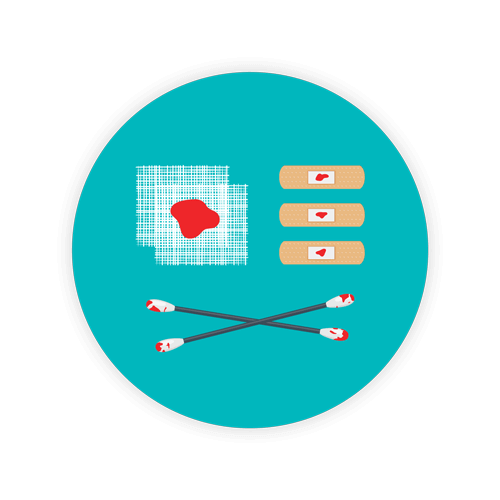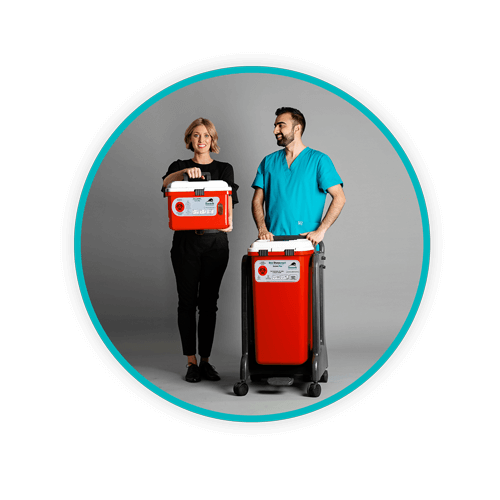10 Examples and Disposal Tips | Other Potentially Infectious Materials

OPIM is an acronym for Other Potentially Infectious Materials. Biohazardous waste management relies on proper waste segregation and identification of different types of waste. OPIM can imply a number of materials in addition to blood, which is one of the most common biomedical/biohazard/infectious materials that healthcare workers typically have to deal with.
Some states use different terms for infectious or biomedical waste, so it’s important for health workers in any healthcare or medical facility to know the difference between hazardous/ infectious and non-hazardous/non-infectious medical waste.
What kind of materials or substances can be defined as OPIM?
- Cerebrospinal fluid
- Synovial fluid
- Pleural fluid
- Pericardial fluid
- Semen
- Vaginal secretions
- Vomit
- Peritoneal fluid
- Amniotic fluid
- Any bodily fluid that is visibly contaminated with blood
- Any bodily fluid that’s difficult or even impossible to identify between different body fluids
Tip: Place any contaminated or potentially contaminated sharp in an appropriate sharps container that is puncture-resistant leak-proof, closable (doesn’t open if dropped), and that is properly labeled and color-coded.
But wait, there’s more…
Some states, such as Wisconsin, add a couple other items to the list such as any unfixed human tissue or organ (other than intact skin), living or dead, and blood, organs, or other tissues from experimental animals infected with blood-borne pathogens. They also include cell, tissue, or organ cultures containing blood-borne pathogens, culture media, or other solutions containing blood-borne pathogens. Also included is saliva from dental procedures, where no visible blood is present.
In essence, in regard to safety and handling, other “potentially” infectious materials should always be dealt with seriously and carefully. The Wisconsin Division of Health Services specifies that any exposure that requires either an evaluation or medical attention is likely when any of the above listed materials (or blood):
- Sprays or splashes or otherwise causes any such fluids to enter the nose, eyes, or the mouth
- Puncture or break the skin, such as from potentially contaminated sharps
- May have gotten into an open or oozing lesion or any area with significant breakdown of skin integrity.
In addition to the items listed above as OPIM, the Occupational Safety and Health Administration (OSHA) also includes HIV-containing cells tissue cultures, or HIV or HBV- containing culture mediums or other solutions, or other tissues, organs or blood from experimental animals infected with HIV or HBV.
OPIM medical waste management
After OPIMs have been identified, proper handling, segregation, storage, packaging, and disposal is essential.
Several options for disposal of OPIMs are recommended by OSHA. While OSHA does not regulate the disposal of medical waste, nor biomedical waste management processes, their standards carry much weight when it comes to compliant practices.
Tip: Healthcare facilities or any facility that produces OPIM is encouraged to refer to federal, state, and even county or city guidelines when it comes to disposal of OPIM waste.
The wording of OSHA’s Blood-borne Pathogen Standard (29 CFR 1910.1030) provides provisions that protect employees when handling regulated waste and potentially infectious materials that risk releasing either blood or OPIM in liquid or semi-liquid.
A few examples of OPIM in a clinical environment might include but is not limited to:
- Blood in blood tubes or suction canisters
- Blood-soaked gauze, including blood-soaked gauze that has dried, enabling dried blood to possibly flake off
- Surgical gloves or other types of gloves that don’t absorb blood
- Contaminated sharps including scalpels, needles, syringes with the needle still attached, dental tools with blood on them, and so forth
- Pathological wastes that contain blood or OPIM
OPIM disposal recommendations
Daniels Health is aware that terminology can play a huge role in how medical waste management is dealt with in any given facility. The fine print of compliance regulation can get sticky. One person’s understanding of a term may differ from another’s. For example, OSHA’s terminology using “contaminated” or “potentially contaminated” can be considered rather subjective, depending on how it’s used. Even if something is “potentially contaminated”, it doesn’t mean that it’s a regulated medical waste.
Tip: Because wording differs from federal to local guidelines, Daniels Health suggests that the healthcare worker dealing with biomedical waste management segregation processes err on the side of caution. From red bag to dedicated waste containers, use of sharps containers, or color-coded containers should be deployed in and around the workplace. Every employee, from management down to housekeeping staff, should be educated and knowledgeable about different waste streams produced by the facility as well as proper OPIM waste disposal methods.
In some cases, it’s up to the person handling the item to determine whether it’s contaminated with of small or observable amounts of blood but how do you determine the definition of “small”? Items that are contained with “small” OPIM or even small items containing blood are often allowed to be placed in “regular” plastic lined trash bins.

Tip: Place OPIM or blood specimens in labeled and color-coded containers that have been properly closed before storing, transporting, or shipping to waste disposal facilities.
Daniels Health provides disposal containers for all types of medical waste, and takes medica
l waste management seriously. Technology has advanced today to the point where employees are protected as never before against potentially dangerous blood-borne pathogens or accidents when handling sharps, blood, or infectious materials.
Tip: Follow local and state DOT guidelines regarding labeling for any containers that are used for storage, transportation, or shipment of OPIM or blood, including use of biohazard symbols, appropriate color (typically fluorescent orange, red, or other prominent color) that visually identifies the container, as well as other symbols and lettering written in contrasting colors for enhanced visibility.
Education, training, and regularly scheduled in-services or training meetings are recommended on a consistent basis to keep your employees safe and abreast of the latest in regulations regarding handling of OPIM and other medical waste.
Turn to Daniels Health
Daniels Health is dedicated to ensuring compliance when it comes to biomedical waste management, as well as healthcare worker safety. For more information about resources, education, and products that save you money while at the same time reducing your risk for non-compliance and associated fines when it comes to biohazard waste management, contact us today.
Let's Talk!
Your time is valuable, and we don’t want to play hard to get. You can either phone us directly on the details listed on our contact page, or feel free to fill out this short form and one of our team members will get back to you as quickly as possible.
